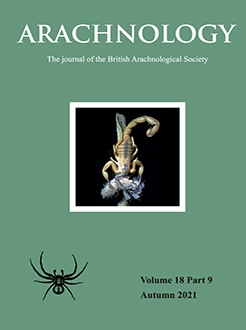Sexual dimorphism in scorpions is generally retrieved for a similar subset of body parts and is presumed to result from alternative types of selection operating on homologous structures in each sex. Even so, investigations which use static allometry as a method for testing specific hypotheses relating to selection remain limited. Sexual dimorphism in the majority of South African scorpion species is poorly investigated, especially in the genus Opistophthalmus, of which the endemic Karoo burrowing scorpion O. karrooensis is nearly completely data deficient. The current study investigates patterns of sexual dimorphism and static allometry in O. karrooensis, based on external morphology. Following character scaling on carapace length, patterns of sexual dimorphism in this species indicate the elongation of male appendages (pedipalp segments, legs, pectines, metasoma, and telson), while females display wider bodies and wide, thick pedipalp segments. These patterns possibly point to an enhanced reproductive output and parental care in females, coupled to a sedentary lifestyle and generalist feeding strategy. Conversely, the male morphology is likely adapted for greater vagility, but should also function during mate-trailing and sexual interactions. In line with these explanations, the body parts in both sexes indicate static allometric patterns pointing (at least in part) to the potential influence of either natural or sexual selection, but further reveal the possibility of intense selection on a number of body parts. Taken together, the selective forces which shape scorpion morphology may be complex, relating to multiple functions of body parts and life-history differences between the sexes.
How to translate text using browser tools
11 November 2021
Sexual dimorphism and static allometry in the South African scorpion Opistophthalmus karrooensis
Jacobus H. Visser,
Sjirk Geerts
ACCESS THE FULL ARTICLE

Arachnology
Vol. 18 • No. 9
November 2021
Vol. 18 • No. 9
November 2021
morphology
NATURAL SELECTION
sexual selection




